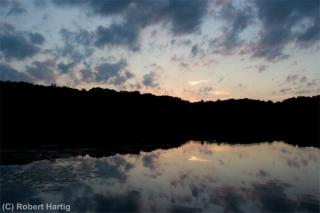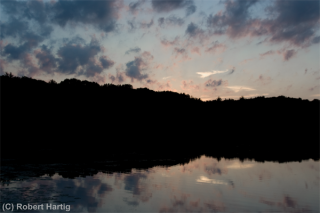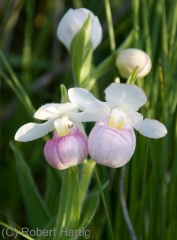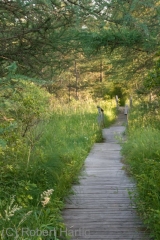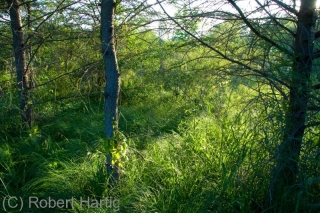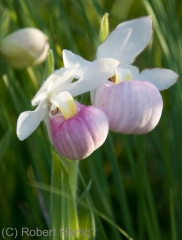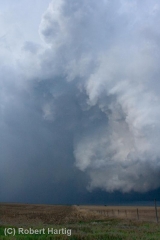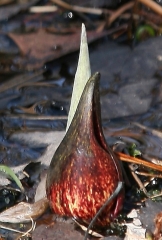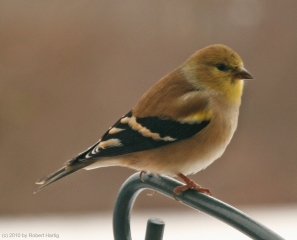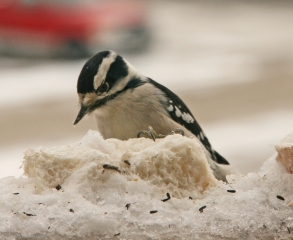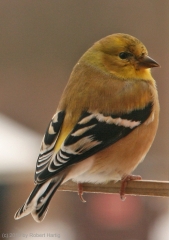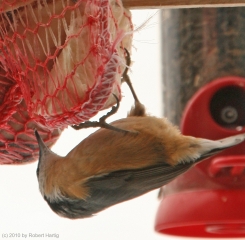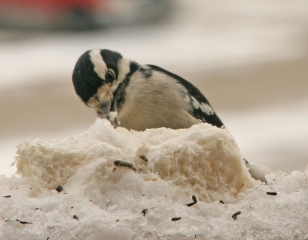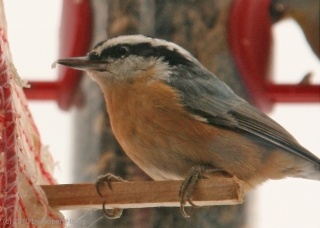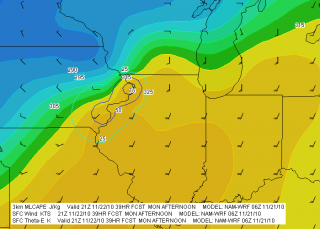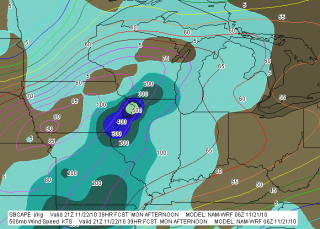The biggest weather news lately has been the heat wave that continues to brutalize the central and eastern United States. Thankfully, these last two days have been easier to take here in Michigan. Friday evening a weak cold front passed through and dropped the dewpoints down into the livable mid-60s for a short while, and since then, variable cloudiness has helped to modify the temperatures.
Yesterday we were in a slight risk area, but with a warm front laying along the Indiana border, the southern tier counties are where convection broke out in Southwest Michigan. One cell near Cassopolis showed sustained, deep rotation on the radar, and Kurt Hulst and I discussed going after it. Given the distance and marginal conditions, we decided to let it go.
Instead, I headed out the door later on with my saxophone and my fishing rod, as well as my camera and laptop just in case storms developed within easy range. Not that I expected any, and none materialzed to divert me from casting a line into the water for the first time in a couple of years.
It felt good to get back at fishing, and picturesque Hall Lake in Yankee Springs Recreational Area was the perfect place to do so. Forty-two acres in size and sporting a small island in its middle, Hall Lake attracts just a handful of fishermen, to whom it offers a tranquil option to the much larger, all-sports Gun Lake to its west. Tucked in a wooded valley, where it is bordered to the south by Gun Lake Road and cradled by the glacial hills of Barry County, it is a place where a man can go to withdraw from the madly rushing world, stand at the water’s edge casting topwater lures into the evening, and let his thoughts slow down to a casual stroll.
I’m no great fisherman. What I do with a rod and reel is more accurately described as dredging. But the fish were eager feeders yesterday, and it took only a few casts before I landed a nice little 12-inch bass–big enough to keep, but I released him. I viewed it as my Father smiling at me for getting back to a hobby that I’ve never mastered but always enjoyed.
More casts netted me nothing, and presently my interest shifted to the sky. The sun had slipped below the treeline, and a flock of fractocumulus passing overhead articulated the twilight. No fiery sunset, this, no Van Gogh sky; just a gently fading afterglow filled with nuance and calm emotion, silhouetting the forested shoreline and glimmering, spirit-like, in the quiescent mirror of the lake.
It was a scene worth capturing with my camera, and I have done so. Click on the images to enlarge them. I like them, and I hope you will too.
